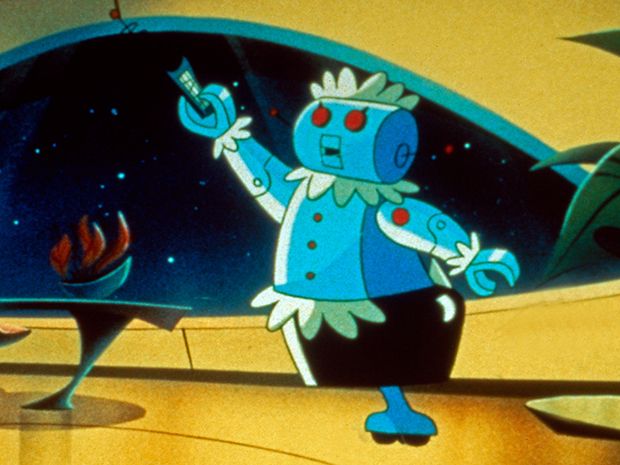 From IEEE SPECTRUM
From IEEE SPECTRUM
By Shahin Farshchi
This is a guest post. The views expressed here are solely those of the author and do not represent positions of IEEE Spectrum or the IEEE.
Science fiction authors love the robot sidekick. R2-D2, Commander Data, and KITT—just to name a few—defined “Star Wars,” “Star Trek,” and “Knight Rider,” respectively, just as much as their human actors. While science has brought us many of the inventions dreamed of in sci-fi shows, one major human activity has remained low tech and a huge source of frustration: household chores. Why can’t we have more robots helping us with our domestic tasks? That’s a question that many roboticists and investors (myself included) have long been asking ourselves. Recently, we’ve seen some promising developments in the home robotics space, including Jibo’ssuccessful financing and SoftBank’s introduction of Pepper. Still, a capable, affordable robotic helper—like Rosie, the robot maid from “The Jetsons”—remains a big technical and commercial challenge. Should robot makers focus on designs that are extensions of our smartphones (as Jibo seems to be doing), or do we need a clean-sheet approach towards building these elusive bots?
Take a look at the machines in your home. If you remove the bells and whistles, home automation hasn’t dramatically changed since the post–World War II era. Appliances, such as washing machines, dishwashers, and air conditioners, seemed magical after WWII. Comprised primarily of pumps, motors, and plumbing, they were simply extensions of innovations that came to bear during the industrial revolution. It probably doesn’t come as a surprise that industrial behemoths such as GE, Westinghouse, and AEG (now Electrolux) shepherded miniature versions of the machines used in factories into suburban homes. At the time, putting dirty clothes and dishes into a box from which they emerged clean was rather remarkable. To this day, the fundamental experience remains the same, with improvements revolving around reliability, and efficiency. Features enabled by Internet-of-Thingstechnologies are marginal at best, i.e., being able to log into your refrigerator or thermostat through your phone.
But before wondering when we’ll have home robots, it might be fair to ask: Do we even need them? Consider what you can already do just by tapping on your phone, thanks to a host of on-demand service startups. Instacart brings home the groceries; Handy and Super send professionals to fix or clean your home;Pager brings primary care, while HomeTeam does elderly care. (Disclosure: my company, Lux Capital, is an investor in Super, Pager, and HomeTeam.)So, again, why do we need robots to perform these services when humans seem to be doing them just fine? I don’t think anyone has a compelling answer to that question today, and home robots will probably evolve and transform themselves over and over until they find their way into our homes. Indeed, it took decades of automobiles until the Model T was born. The Apple IIs and PC clones of the early 1980s had difficulty justifying their lofty price tags to anyone who wasn’t wealthy, or a programmer. We need to expect the same from our first home bots.
So it might be helpful to examine what problems engineers need to crack before they can attempt to build something like Rosie the robot. Below I discuss five areas that I believe need significant advances if we want to move the whole home robot field forward.
The full article here goes on to discuss the following critical challenges: 1) We need human-machine interfaces, 2) Cheap sensors need to get cheaper, 3) Manipulators need to get a grip, 4) Robots need to handle arbitrary objects, and 5) Navigating unstructured environments needs to become routine.
Comments
Hi Gary,
Some nice observations concerning the future of situational awareness and robotics.
Regards,
TCIII AVD
Hi John,
I agree, that the single biggest problem is currently "situational awareness".
But that is also a big concept and we have been chipping away at it's borders with all the nifty navigational stuff we have been doing.
We basically went from zero awareness to absolute positional awareness with the GPS integration.
Of course, as humans we don't get around on the surface of the planet by absolute position awareness, rather position relative to everything else awareness.
And with Lidar and sonar and better, 3D laser scanners, and even high speed stereoscopic camera based 3D vision systems we are beginning to to be able to actually have the ability to acquire position and distance relative information.
And 3D distance senor capability is the number one important ingredient necessary for being able to achieve situational awareness.
The new Kinect 2 for the XBOX 1 incorporates a true time of flight camera and if Microsoft hadn't XXXX canned their "Robotics Development System" it would already be forming the basis of an excellent position relative navigation system, but ROS is alive and well and much emphasis is already being placed on position relative navigation and awareness.
I think we live in very exciting times, where the most singularly important thing for robots (the ability to actually see) is becoming not only possible, but affordable.
Our UAS are interesting and capable things, but the future belongs to terrestrial robots.
And, even as we have integrated ourselves with our current technology, smart phones, computers, internet, etc, we will do far more so with Robots, think about the HoloLens, perhaps.
Looking at them simply from the aspect of how they will benefit us is not adequate, they will not simply benefit us, they will change us.
Best,
Gary
#6 The über power source.
@John,
Very true, unfortunately.
Regards,
TCIII AVD
Two simple words that are very hard to do.
Situational awareness
I believe that the five challenges covered in this post are also germane to the challenges being experienced by the sUAS community.
Regards,
TCIII AVD